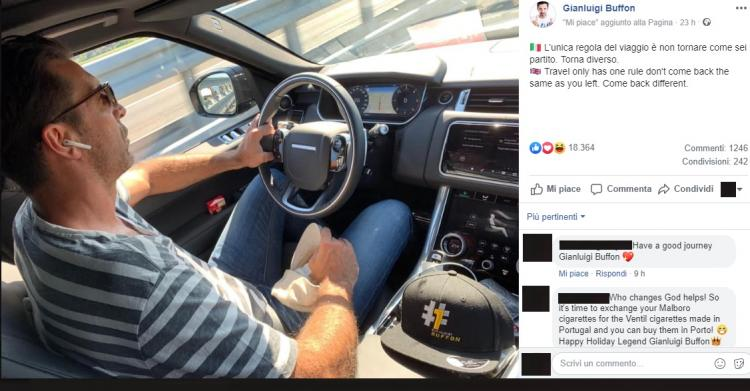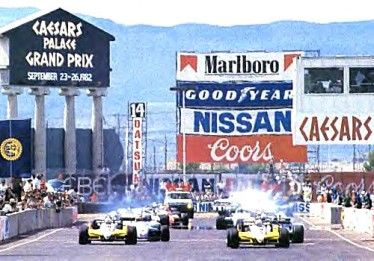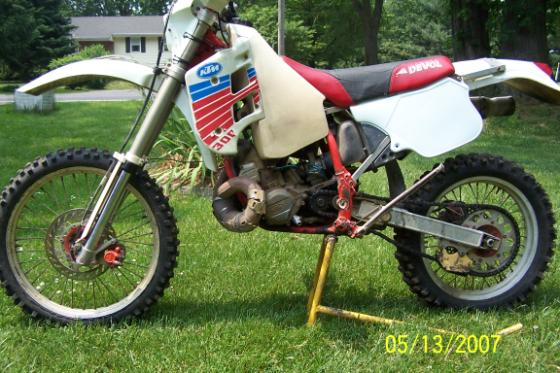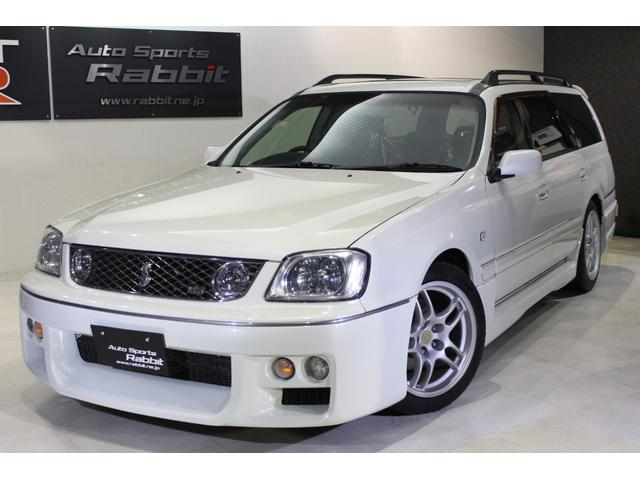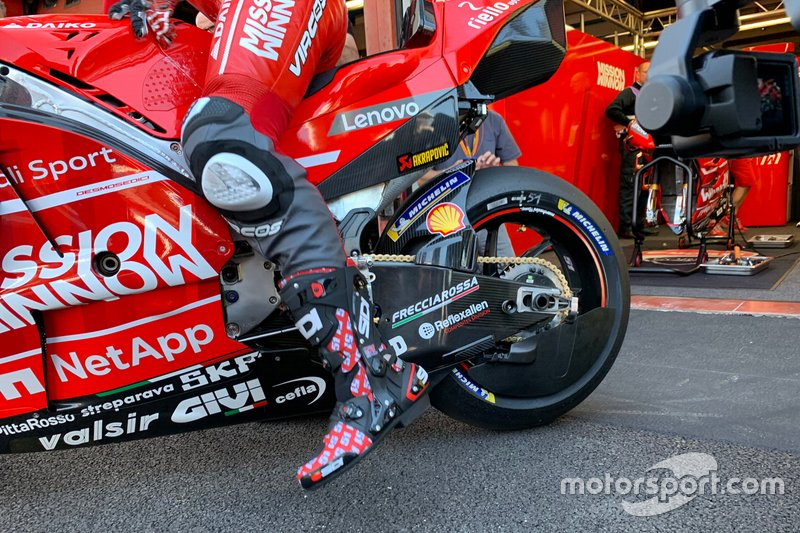Tutti i contenuti di sarge
- F1 2019 - GP Austria
- Alfa Romeo Giulia e Stelvio M.Y. 2020 (Spy)
-
F1 2019 - GP Francia
- MOTOGP 2019
-
F1 2019 - GP Francia
Cagate che non capiterebbero se fossero liberi di fare prove in circuito. Ma siccome dobbiamo porre un limite alle spese,ecco che ci inventiamo i simulatori che poco non costano e ci mettiamo a girare piloti veri pagandoli,salvo scoprire che fuoco lo dobbiamo mettere su una macchina vera per capire se la direzione presa è giusta. Che poi vorrei capire come fanno i team privati,usano copie pirata di granturismo? Ditemi se non è una ubercazzata questa...
-
Circolazione moto 125
- Renault Captur 2019 (Spy)
-
MOTOGP 2019
Lo è da quando hanno deciso di fare un avantreno "puntato"per recuperare agilità e inserimento. E questo però ti porta ad avere una moto molto nervosa che richiede una guida vigile,al minimo accenno devi essere svelto a recuperare grip.Come fa marquez. Il che non è da tutti. Infatti lollo,crashlow e altri vanno giu senza capire perchè.Tutte le volte che cercano di forzare,finiscono a terra.Perchè non è molto naturale controsterzare con l'anteriore mentre ti sta prendendo sotto. Una volta era una caratteristica yamaha che si portavano dietro dalle ow del 93 se non ricordo male.Moto agile nelle curve,con tendenza a cadere di avantreno. Rainey spigolava molto,cadalora cercava la percorrenza rotonda da 250,ma non ci riusciva e roberts lo mandò a stendere dopo l'esperimento della gommatura mista.
-
MOTOGP 2019
Al solito teletavulliaaccadi deve montare una polemica che non esiste.E qualche guidatore di grazielle al solito si accoda senza avere la minima idea di come funzionano i freni di una motocicletta. Andando a chiedere di qua e di là nel tentativo di trovare qualcuno che a botta calda sbaglia a parlare.Oh hanno beccato il sommo che li ha bacchettati in mondovisione,ma si sono ben guardati da farlo passare a tv8... Ed infatti trovano un ex pilota che punta il dito verso l'ispanico(eh beh a parità di titoli,vuoi mettere)... L'incidente per me è un normale incidente di gara.Non è arrivato lungo contrariamente a qualche altro rinomato campione(quello no,non fa errori da pivello)semplicemente gli ha preso sotto l'avantreno. Bradley smith alla stessa curva ha steso espargarò,avete per caso sentito qualcuno parlarne? Dell'erroraccio che ha fatto crashlow ne ha parlato qualcuno? Comunque sia senza quella caduta,marquez faceva uno zero qui.Lui era nervoso(perchè si sta ripetendo un film già visto in hrc,ma lo fecero anche con lawson,con rossi ecc..)la moto non stava ferma dalle prove( e non è una novità,qua a barcellona anni fa pure dovizioso dovette faticare a tenere le due ruote dritte,proprio alla caixa) e non sappiamo cosa sarebbe successo dopo se avrebbe dato lo strappo o avrebbero fatto il treninodellammmore.. Gli ha detto culo perchè quando hanno aperto il gas la ducati di dovizioso si è imbizzarita e ha dovuto chiudere e se li è ritrovati addosso.Se tutto fosse andato come erano partiti il frittatone probabilmente lo faceva marquez,non sarebbero arrivati in quattro in staccata. Che poi,non è la prima volta che succede e qui anche
-
MOTOGP 2019
Disse il campionissimo: E con questo abbiamo piantato l'ultimo chiodo sulla bara. Checchè ne dicano i giornalettisti di teletavulliaaccadi,sempre pronti a smentire chi lo ha fatto notare negli anni,che da un bel pò lo spettacolo è artefatto,visto che sono decenni che seguiamo il motociclismo. Rivoglio il mondiale a telecapodistria..
-
Peugeot 208 e e-208 2019
Ma cosa vi arrovellate a fare? 4 bulloni--->no premium. Fine.
- 711 risposte
-
-

-

- 7
-
-
- 208
- 208 2019
- peugeot
- peugeot 208
-
Taggato come:
- Mercedes-Benz/AMG GLB 2020
- Trattativa Renault-Fca
- Trattativa Renault-Fca
- Lamborghini Huracán Sterrato Concept 2019
- Skoda Octavia IV 2020 (Spy)
- Trattativa Renault-Fca
-
MOTOGP 2019
Pensa te, abbiamo costruito una leggenda sulla "modifichina dell'ultimo minuto",adesso è diventato un problema. Beltramoooo dove sei?E' il tuo momento!!
-
MOTOGP 2019
Concordo,va bene la voglia di vinGere ma la manovra è stata un pò alla beleno. E li se dovizioso non rialzava facevano il frittatone. Anche perchè dopo il mugello se torna dietro, non è servito a nulla se non a togliere punti al compagno di squadra.Al massimo gli salva la sella se miller continua a sdraiarsi.Anche perchè non saprei chi potrebbero prendere,se non un rientrante bautista. Fino ad ora dovizioso è stato lucido tanto che pure a fronte dei blackout che ha avuto era a 8 punti da marquez. Diventa fondamentale capire che cosa accadrà adesso,se hrc assecondando gli altri piloti decide di fare una moto per tutti,stravolgendola,se le merdagomme plausibilmente cominceranno a non permettere di correre per tutta la gara(ieri giravano due secondi più lenti di sabato e qualcuno con la h all'anteriore si è pure steso)dando luogo a fantastichi trenini da moto3deigrandi,dove il fenomeno di turno(tipo miller o rins o quartaracoso) si inventerà il sorpasso impossibile e farà strike. In questa prospettiva conviene fare più punti possibile.
-
MOTOGP 2019
Dovizioso non c'è.Hanno mandato la sua controfigura.Tocca sperare in petrucci che lo vedo messo meglio rispetto a miller. Diciottesimo posto in griglia del sommo non veritiero e no, contrariamente a teletavulliaccadi' non è ancora il momento di recitare il requiem. Sul fatto che in squadra nessuno osi contraddire le scelte compiute,beh cara grazia che ci siete arrivati anche voi.Sono solo tre anni che lo andiamo dicendo. Nel frattempo vinales potrebbe non uscirne più,tanto che stanno guardando con interesse a quartaracoso... Meanwhile,nel box ducati stanno perdendo il sonno cercando di raggiungere il titolo di "motobrutta 2019". Perchè l'ubermotore non motora più e l'honda in questo momento va di più.O meglio a vedere come uscivano dalla bucine per lanciarsi sul dritto hanno grossi problemi dietro.
- Trattativa Renault-Fca
- BMW Serie 1 M.Y. 2022
- Trattativa Renault-Fca
-
F1 2019 - GP Monaco
Non tutto quello che si vede è vero. Qua con un cambio di gomme a macchine finite,si sono ribaltate le situazioni. Ovviamente lo hanno preso in quel posto le macchine che hanno seguito una filosofia aerodinamica diversa. Questa f1,odia profondamente tutto ciò che è rosso,i motivi possono essere intuibili e credo che non sia un caso che il manager di leclerc sia il figlio di alvaro,il diessedalgustoraro. Il disegno si compirà quando alvaro e figlio potranno indossare di nuovo il giubbino rosso,ma non da dipendenti. Tra l'altro agitare il giovane,non so quanto bene gli faccia,perchè vabbene che lo vorrebbero tutte le scuderie ufficiali,ma se continua a sfasciare macchine è un attimo che finisci a fare reality. Complimenti a vettel per essere rimasto lucido e aver portato a casa il podio con una macchina infida,che non ti permette di esprimerti. Delusione versbatten,che non tiene fede al suo nome e si fa dieci giri dietro hamilton con le gomme finite. Versbatten che conosco io,al secondo giro dietro,gli entrava negli scarichi.
-
Lo stipendio necessario per acquistare e mantenere un'auto "importante"
Di la verità,ti chiami gigggino e hai qualche difficoltà con i verbi,vero? ?






